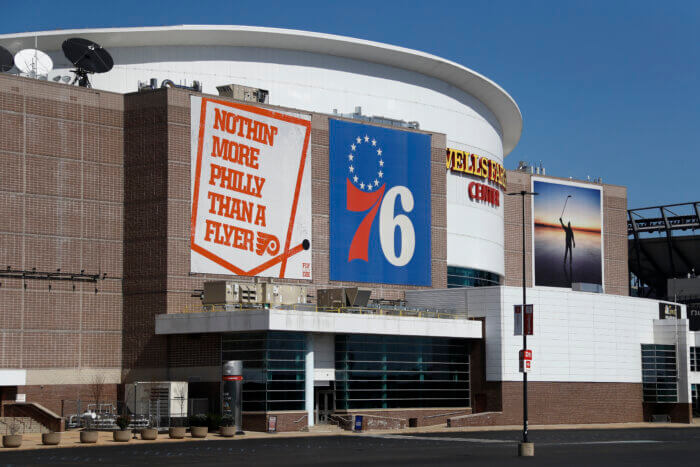Rosy reports based on national statistics have recently exulted that, across the nation, murder rates dropped in 2018. But that’s not the case in Philadelphia.
There’s three weeks left, but 2018 has already seen more murders than past years. As of Dec. 10, the Philadelphia Police Department reported 325 homicides, a 10 percent increase over that time last year. That is more murders than in all of 2017 — which ended with 315 homicides and 2,205 non-fatal shootings — and exceeds the city’s year-end totals for every year since 2012, which ended with 331 homicides.
Demographically speaking, the vast majority of victims are black and brown males aged between 15 and 34, as are many of the perpetrators.
The grim statistic also represents a reversal of the downward trend in homicides that bottomed out at 246 murders in 2013, the city’s lowest total since the 1960s.
“This is a public health epidemic of epic proportions,” Reuben Jones, a local activist and organizer with the Philadelphia Community Bail Fund, said of the growing murder rate. “We already surpassed the number of the last couple years. We’re only in early December. We’ve seen a bunch of multiple homicides lately. … We had taken it down, and everyone celebrated the 50-year low. But ever since then, it’s been creeping back up. We have to hold our elected officials and leaders accountable. This is unacceptable.”
The last several weeks of 2018 have been been stained by several particularly gruesome multiple homicides.
There was the Nov. 19 quadruple murder on the 5100 block of Malcolm Street in West Philadelphia. Two step-brothers and two sisters in their early 20s were executed in cold blood. Homicide detectives later arrested three men, who they say killed the four to steal a small amount of drugs the stepbrothers had found in a house they were fixing up.
On Dec. 1, a triple homicide was discovered on the 1900 block of West Venango in North Philly — three elderly residents, including the homeowners, who had been killed days before. On Dec. 6, homicide detectives arrested a 23-year-old former tenant in the home, who they say killed the three after being told he would be evicted for non-payment of rent. The suspect allegedly stayed in the house for a day or two with the corpses, then stole the 92-year-old homeowners’ credit card to go on a shopping spree in Center City, where detectives found and arrested him.
The same night that case was closed, another triple homicide was reported in Frankford — three men in their 30s killed, allegedly in a drug deal gone bad. And over the past weekend, another three people were shot to death.
Before the recent bloodshed, Philadelphia had a brutal summer. More than 150 black male teenagers were shot over the summer, many of them fatally. Victims included Kristian Marche, a track star who was reportedly killed while defending his home from a burglary — on the same day he was to head to Penn State to start his education with a full athletic scholarship.
As the list of victims grows longer, police officers and detectives have an even harder job than ever. While all the above-mentioned cases got media attention and were quickly closed, hundreds more remain open. For murders in 2018, the police department had only cleared about 31 percent of cases, the Philadelphia Inquirer recently reported. Detectives often run up against a lack of cooperation from witnesses to crimes, despite the city offering a $20,000 reward to witnesses in all murder cases.
“Unfortunately, there’s a great likelihood, if you shoot and kill somebody, you’re going to get away with it,” Jones said.
Philadelphia leaders are aware of the problem. After the bloody summer, in September, Mayor Jim Kenney ordered senior city leadership to develop a plan “for how to dramatically reduce the killings and shootings in Philadelphia” by looking “at violence through the lens of public health,” the mayor’s office said. That plan is due by Jan. 5, 2019.
The public health approach generally means taking an epidemiological view of violence – treating it as a disease whose spread can be documented and deterred. Police records indicate most gun violence in the city is concentrated around specific hot spots of extreme poverty and illegal activity.
“We know that violence is contagious, cannot be geographically contained, and requires early intervention,” City Council President Darrell Clarke said in a statement at the time. “Discriminatory residential segregation, disinvestment in low-income communities, and mass incarceration only lead to more violence.”
But the problem goes deeper, Jones said. “So many people feel like we live in two different societies. People who live outside that mainstream society, they know that the street level has its own rules, its own forms of justice,” he said. “Until you infiltrate that, make them feel included, make their needs meet, make them feel included in society as human beings, they don’t feel valued … this is why the violence is happening.”
Philly’s homicide rate is one of the highest in the nation, at more than four times the national average.
Nearby, New York City, despite having a population of 8.6 million compared to Philly’s 1.5 million, ended 2017 with fewer homicides than Philly, a record-breaking low of 290 homicides. As of early December, New York’s downward trend was continuing. But in comparison, the NYPD has 45,000 police officers, compared to 6,525 officers in Philadelphia.
To contribute to Philly’s pending anti-violence plan, contact the the Office of Violence Prevention at 215-686-0789.



























